Maybe it’s not about being DAW-less or having particular software or gear. Maybe it’s just having your hands touch a box from the future that gets you into that state of music play. Andreas gives us an in-depth review of the $499 Bluebox.
Our resident compact hardware guru from Sweden Andreas Roman is back, from the latitudes up toward the Arctic where folklore tells us of mythological obelisks covered in knobs that make some really fine grooves and sound. (Or at the very least, things are dark enough right now that making electronic music is the only sensible thing to do!)
Andreas’ thoughts are always a pleasure for me to read, not least because he always sends us music to transform our mood. So let’s begin there, because whether or not you need a Bluebox, I think you’ll be glad to have these. -PK
First up, “made entirely with the Sequential Prophet 12, making use of the Bluebox synced multi-tracking to build layers from the Prophet, and then applying on-board Bluebox effects, EQ, and mixing for space“:
circuitghost · Prophet 12 – Prophet’s Rain
When we were young
Let’s start with a slice of truth from my past. When I was a teenager and the other boys played soccer, I took a job in a video game store to save up for a Yamaha MT8X [cassette mixer]. That was an eight-track porta-studio, kids, and I wrote an entire album on that thing.

No wonder. This box was from the future. It had multi-track recording. Sync. Analogue mixing options. A combination of features that were found in plenty back then, but today are as rare in hardware as snow at Christmas (where I live, that is). And yet, like honesty, it seems we still want and appreciate it so much that when Korg launched their April Fool’s joke about doing a portable cassette mixer in the volca format, we wanted to believe. Cruel, Korg. Very cruel.
Well, 1010music heard our woes and they’re bringing us mercy with their latest product, the Bluebox.
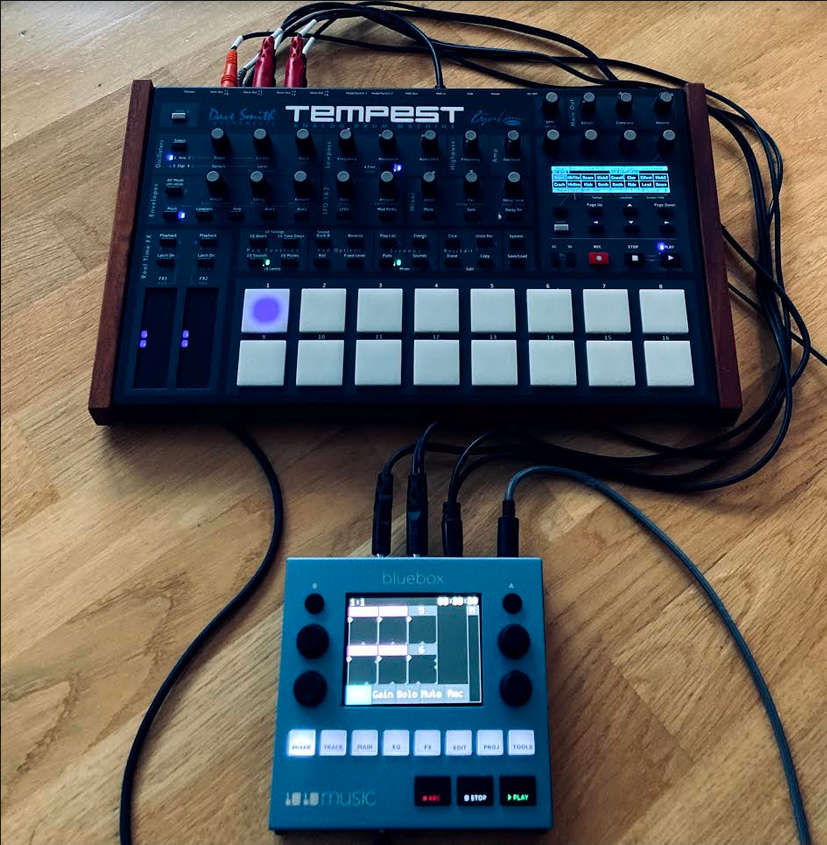
The boxes
Like 1010music’s Blackbox, a neat and compact desktop sampler, the Bluebox is a no-nonsense product that does exactly what it promises. It’s a mixer. That records. Multiple tracks, at once, through its six stereo inputs. It can go on for hours, if the MicroSD card can take it.
Then, you can work on the mix with panning and volume, sends and EQ per track and on the master, outboard effects and onboard delay and reverb, and compression to glue it all together. There are also options to switch between alternate takes, if you liked the bass on your first session but preferred the lead on your third. It syncs through MIDI. And this all fits in the palm of your hand and can run from a portable USB power source (though it’s pretty demanding, so make sure you’re using a strong enough battery or adapter).
Put this next to the Blackbox, and besides the fact that they look like super cute twins, you have a complete solution for creating beats and songs in the Blackbox and record and mix in the Bluebox. Thanks to flexible midi mapping, you can even make this micro rig controllable from your favorite knobs and sliders interface and bring this on stage for live performance.
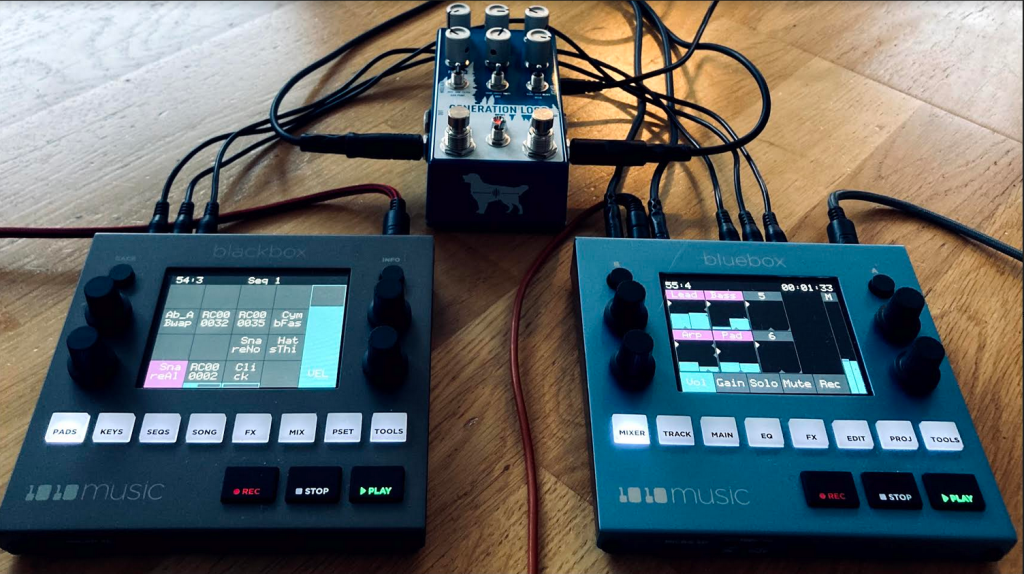
Multiples
So at the back, you got six stereo inputs that can be rewired to become twelve mono if you so prefer. That’s twelve tracks recording to the SD memory card. (My Yamaha had eight, to a 30 minute Maxell cassette tape. Not bad, 1010music. Not bad at all.)
You also got three outs which can be used for cueing, monitoring and external processing. They’re not as flexible as the ins and serve different purposes, but their presence still allow a great deal of combinations. It’s tight between the connection points so if you’re using them all at once, your choice of cable will make a difference. If they’re too thick, they won’t fit next to each other, but choose wisely and you’re good.
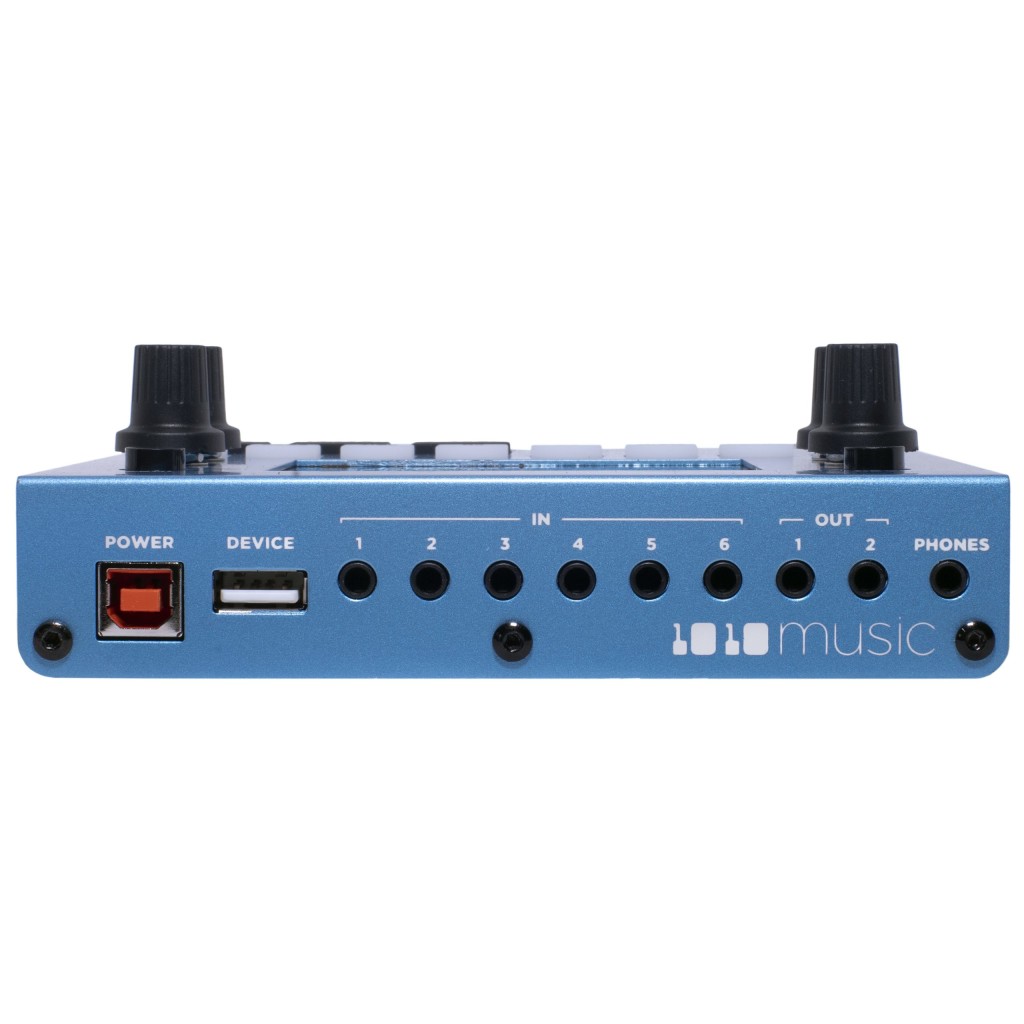
It took me about ten minutes to unbox the Bluebox (oh, snap), make myself a cup of coffee, run the four outs from my Prophet 12 into two Bluebox stereo ins, figure out how to arm for recording and then actually record something. It’s silly easy. I was almost left a bit underwhelmed, thinking – “Hookay. What now? I’m like … what? Done?” And I suppose if I’d been happy with the results, I _would’ve_ been done. But obviously, with all these options available, there was plenty left to explore.
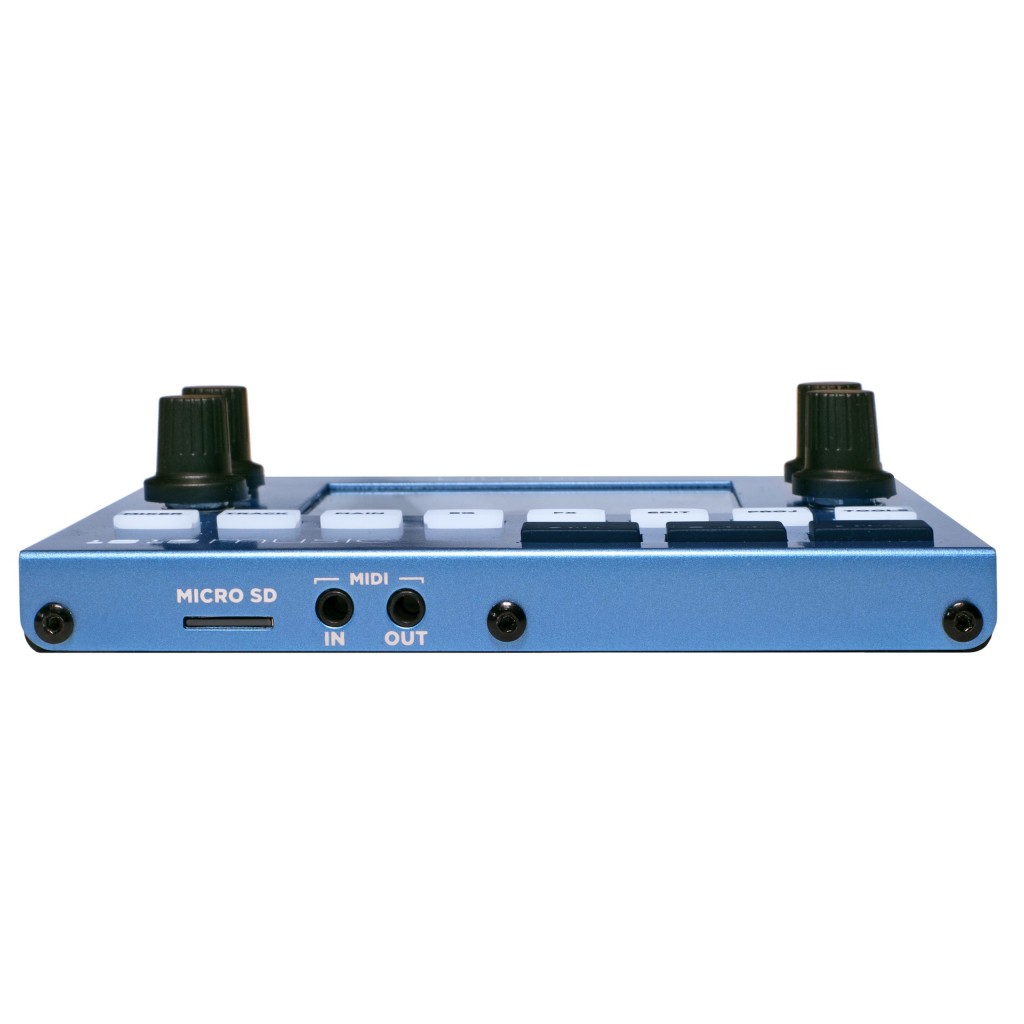
Synchronized layers
While the luxury of several outs from an instrument is a great convenience when you’re tracking into a mixer, not all kits have this option. Line-level synth gear, which is what the Bluebox primarily is made for, often settles for just a mono out or a stereo pair rather than multiple dedicated outs. Even so, you might have a fantastic thing going with your single Novation AFX Station and a batch of sequences, and in this case, the Bluebox not only records several tracks at once but also accepts and sends midi clock, allowing you to layer your work in perfect sync.
I tested this by connecting Bluebox MIDI into my Synthstrom Deluge. [See Andreas’ review of that, too.] The Synthstrom accepted the clock at once and I recorded with no hassle – six sequences from the Deluge in as many takes. Overkill, one might say, to split up a single session from such a potent groove box. Not at all, I would reply, if you want to widen and expand your song beyond the onboard mixing capabilities of whatever box you’re on. Even if it’s a unit wired to the teeth with line outs, such as the Tempest, Analog Rytm or TR-8S, the options you get when you split up your recording like this make for a case all its own, especially when you can save the master track as well, essentially making it your rendered result of your final mix.
I’m aware I’m stating the obvious here. But now the obvious can now be done in a way that doesn’t require a computer. The Bluebox doesn’t reinvent mixing and recording but it brings something to the process that we haven’t seen for awhile, in a form factor that I don’t think we’ve ever seen at all.
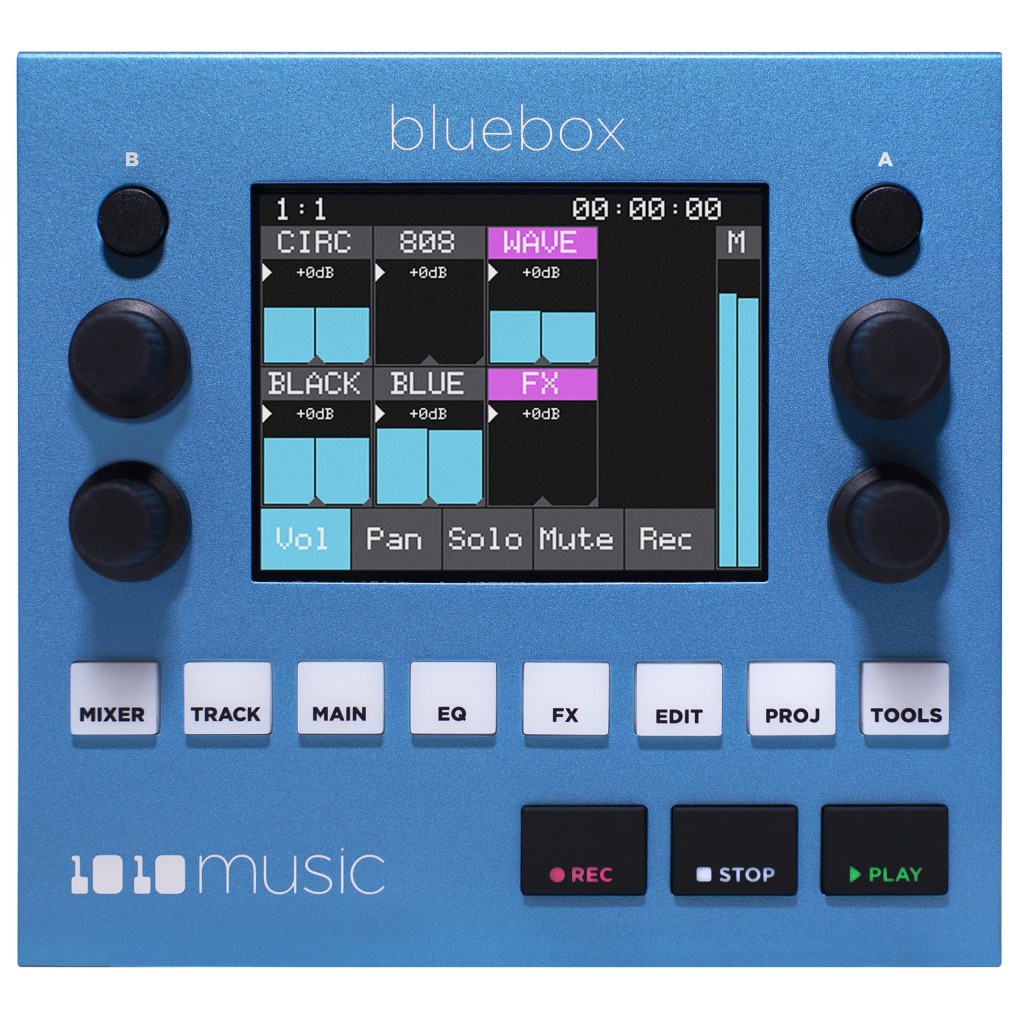
Outboard
With summing and recording covered, there’s also what comes out from the Bluebox and potentially back in again. I’m a great fan of outboard effects. I don’t own many, but those I keep I do because no sampler or synth can equal them. So I threw something together in my Blackbox and used its three outputs to record three tracks into the Bluebox.
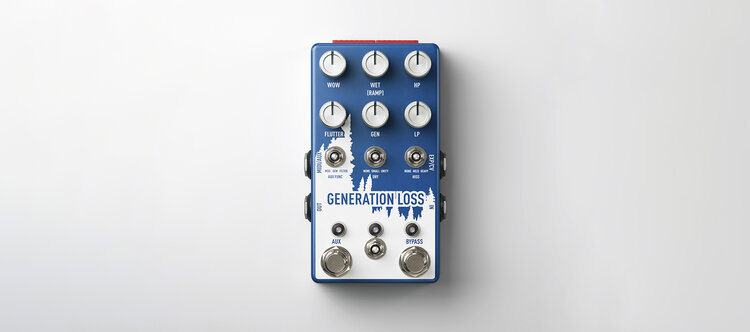
The Bluebox’s second output can be assigned to send its own path to outboard gear, so I brought out my Chase Bliss Audio Generation Loss, connected it to the Bluebox second output, and assigned one of the tracks to run through this chain. The result was as expected – a simple and straightforward way to add that lovely nostalgia flavor to one or several tracks. Things got more interesting when I decided to record this. I armed a free track and taped the Generation Loss version of the track into the Bluebox, which gave me a perfectly synchronized version of the source material in glorious, fluttering tape-like mono. I panned that one to the hard right, the original source track to the hard left, and suddenly I wasn’t so much mixing or recording as I was sound designing.
It’s a powerful addition to using external effects in a context where you not only mix, but can record the results as well. If you know of any other palm-sized hardware mixer that can do this, let me know.
If you only want to give your mix some room, though, the onboard delay and reverb are both good. They’re crisp and clean with lots of options that can take you from the ordinary to the crazy. But their role is clear – even if you can be experimental, their purpose is to create space where it’s needed and save the funkier explorations to any favorite effect you got lying around.
The frequencies
Each track as well as the master has its own four-band EQ. Each band is configurable from low shelf and lo cut to high shelf and hi cut. You’re able to adjust frequency and gain on each one, so things can quickly get out of hand if you don’t know what you’re doing.
By comparison, you can’t really go wrong with the Blackbox’s onboard filter. Whichever way you tweaked this one knob value, you got good results. Not so with the Bluebox. It easily destroys or elevates your mix with just the slightest touch of your hand – and I quickly learned that the difference between great and awful was only a nudge away. It wasn’t obvious to me what nudge, though, and while this of course exposes my lack of sound engineering skills, I know I’m not the only one who doesn’t know all that much about these things when they get complex-ish. I find comfort in giving myself up to someone else’s idea of basic mixing principles.
This is partly why I like the SSL SiX mixer so much, which I’ve been working on for the better part of this year. Someone decided for me the behavior of the compressor, like 1010music did in the Blackbox which you can’t really tweak at all, and I can enjoy the tactile process of working with faders and knobs while I know I won’t get into too much trouble. In the Bluebox, they’re giving me so many parameters, I don’t know what I’ll do with them all.It’s just something you should be aware of. You need to do the work to get it right and the gaps between good and bad aren’t soft and nuanced. But the end results are worth it, because in this labyrinth of options, there are sweet spots to be found. I might be spending just a few minutes with the SiX until I’ve found what I’m looking for, but the hour I’m pouring into the Bluebox before I’m happy is nevertheless an enjoyable one. Just for another reason. It’s also worth noting that recording happens post-fader and EQ, which isn’t a given in this context and as a consequence, quite useful.
Ed.: Let me distance myself a bit from our reviewer here and say – looking at the interface 1010 have chosen here, I do see exactly this risk. As opposed to the musicality of a more tested mixer design, I sort of expect exactly the danger Andreas is describing here – but then I also don’t know that I’d expect a tiny mixer-recorder like this to be ideal for precise equalization, certainly not without adjustment.
Live
Some of us use mixers not only as boards to make a track go from good to great, but also as an instrument. I remember a lovely song, “Opera,” from Daniel Lanois’ album Flesh and Machine where in the video, he plays only a mixer as the track keeps pumping, his session musicians adapting to the way he reworks the song.
In this context, the Bluebox is not a tactile alternative. Like the Blackbox, while its features allow for some cool improvisations in a live situation, its interface does not. I can hardly fault it for that, seeing as it’s very clear on its proposition that convenience is a factor. But if you’re going to use the Bluebox live, it cries for external control. Fortunately, thanks to a clever midi Learn function, the Bluebox accepts mid input from your favorite controller. Just hook it up, activate said feature and work your controller to map it to any Bluebox parameter you prefer. Not all of them can be assigned to external control, but the ones you really need and a few more, do.
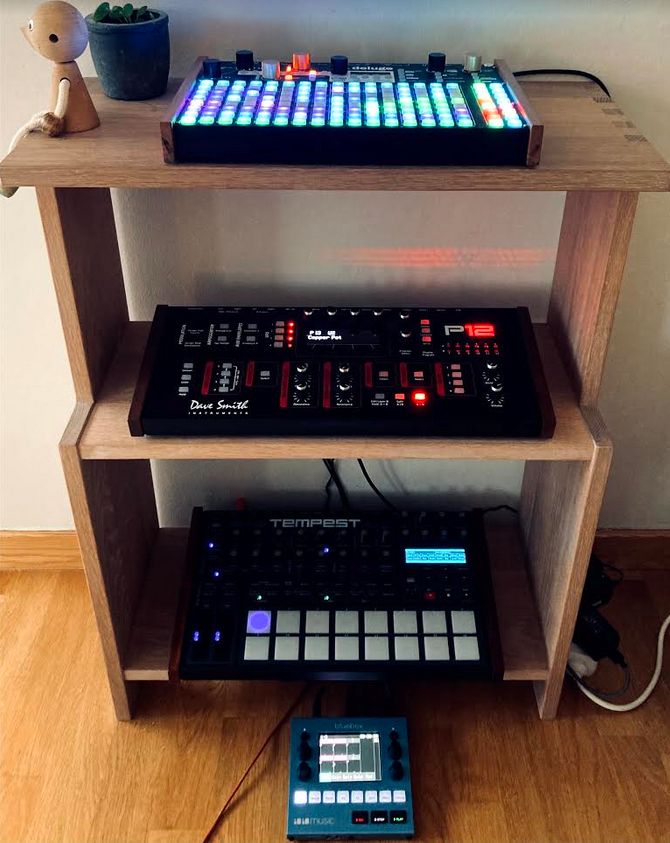
Conclusion
If you’re comfortable with the format, there’s no doubt the Bluebox brings a convenience and flow to the mixing and recording process that one simply is not used to, when one approaches these things with a computer and a sound card, or a traditional analog mixer. If I want to plug in all my gear and record my session in one go, it’s hard to find a more streamlined solution. File transfer from the Bluebox is easy, so I’ve also used it to just record six clean tracks from my sessions and move them into the Blackbox, where I’ve then applied the sampler treatment before assigning the takes to multiple outs for final mixing through my SSL SiX.
With all this said, the Bluebox innovates to a large extent by entering a market that has no competing products. You’ll find behemoths or tools whose essential features are oddly crippled. The closest you’ll get if you don’t go the Tascam route and look into their Model series, is a groove box that carries a strong, inherent sound with solid onboard mixing options, such as the Toraiz SP-16 or the Roland MC-707. But those come with their own limitations, not in the least that they can’t spit out much more than a few minutes worth of audio. [Ed.: Yeah, that’s how different they are; I don’t know I would have even made the comparison! Bluebox it is!]
Samplers that do offer streaming, aren’t sufficiently equipped to handle a mix the way the Bluebox does. I’m thinking the Deluge and the Blackbox, for example. Or good old Octatrack. All good-sounding instruments. Can’t touch the Bluebox as far as final output goes, though.
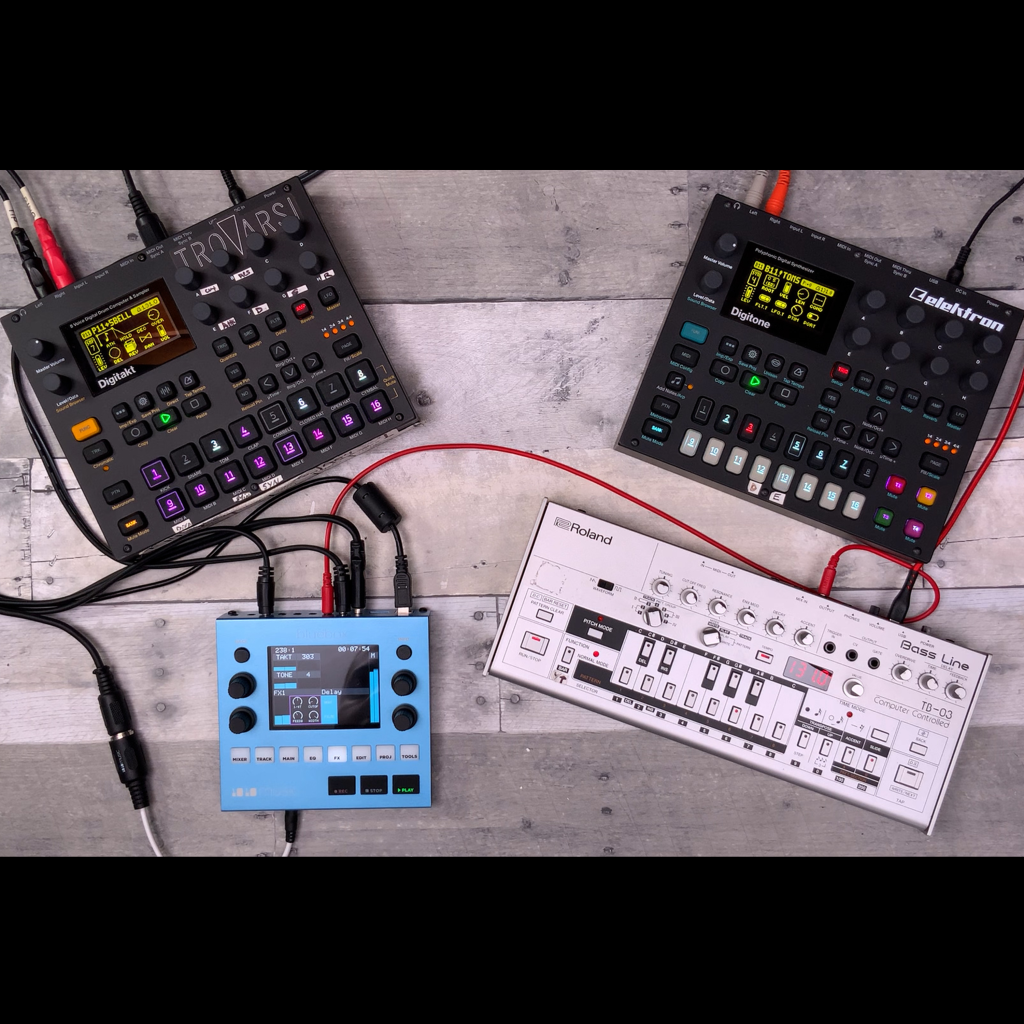
So for some, this is going to be a no-brainer. Maybe you just need a way to mix your live jams and record the results for further explorations elsewhere. Maybe you don’t like DAWs. Or you’re just curious. Desk space is tight but you take mixing and recording seriously.
For others, it’s a chance to contemplate if portable mixing and multitrack recording to boost was the blocker that stopped you from making great music, or if the itch was elsewhere. Either way, the Bluebox is a catalyst release and the fact that it’s done with the impeccable quality and attention to detail that 1010music is known for, makes me feel the world’s a slightly better place with the Bluebox in it.
Let’s finish with more music.
“More traditional, recorded from all the Blackbox outputs into the Bluebox, dry, and then mixed in the Bluebox. Slightly harsh in the higher frequencies, but the onboard features of the Bluebox added a lot to the space and room”:
circuitghost · 1010 Blackbox – Dry Winds (1010 Bluebox version)
Previously: